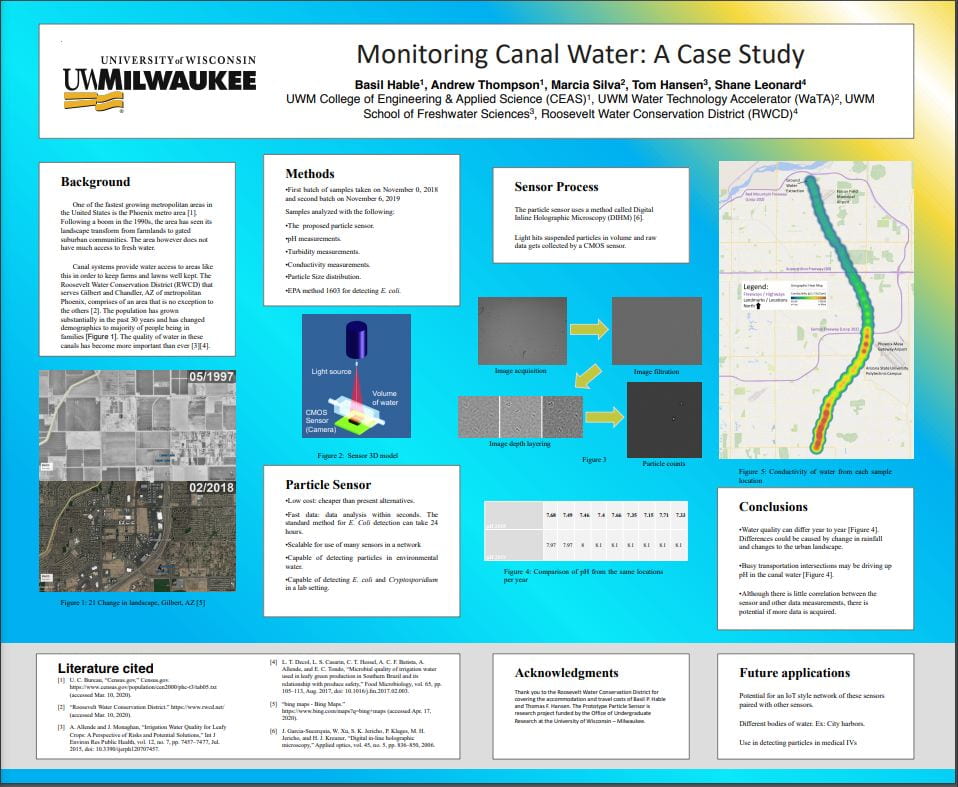Basil Hable, “Monitoring Canal Water: A Case Study”
Mentors: Marcia Silva & Thomas Hansen, Global Water Center & Freshwater Sciences
Canal systems are integral to certain parts of the world in order to give people access to water. In the town of Gilbert, Arizona, this water was primarily so farmers could water their crops despite the normally dry climate. However, recent changes have shifted the customer base of the irrigation water. Gilbert has extensively developed former farmland into suburban neighborhoods. The canal water has never had extensive testing before since it’s not drinking water and it doesn’t get in contact with people. Since suburban neighborhoods have become adjacent to the canal, direct and indirect human contact with the water has become a higher probability. A team at UWM has developed a low-cost fast-data particle sensor, that has demonstrated ability to count particles in environmental water and has also shown the ability to count microorganisms in pure water. Water samples have been collected at different points of the canal in order to analyze the full length using the sensor and other lab tests. Preliminary results show rises in conductivity and dips in particle counts downstream of canal and highway intersections. These results could show possibility of monitoring runoff pollution from roads into water systems.
Click the thumbnail below to open the full sized poster in a new tab.

Water quality is so important – I like your section about future applications and would like to have heard even more about your ideas.
I also had a few questions:
– You conclude that water quality can differ by year, but I wondered about whether the amount of variability you show is a small amount of variability or a lot of variability, and what a change like that might mean.
– What method was used to identify intersections as areas that may drive up PH levels – was the conclusion based on qualitative or quantitative methods?
Nice work!
This is a well organized presentation. It is easy to follow along and understand your project.
A question I have is what kinds of landscape changes occurred along the canal between your data collection. Also, how would you expect this to change over 5 years compared to annually?